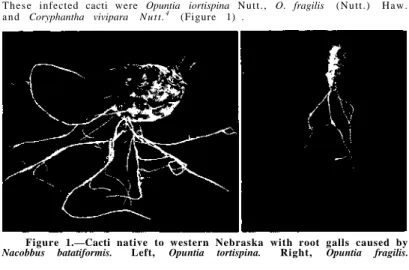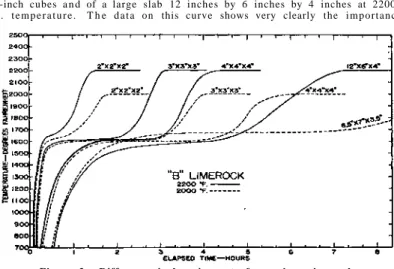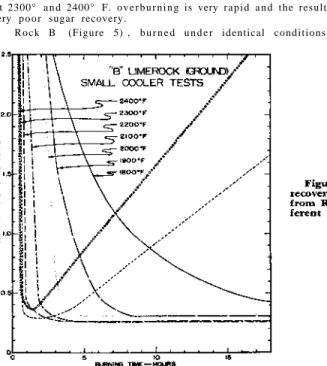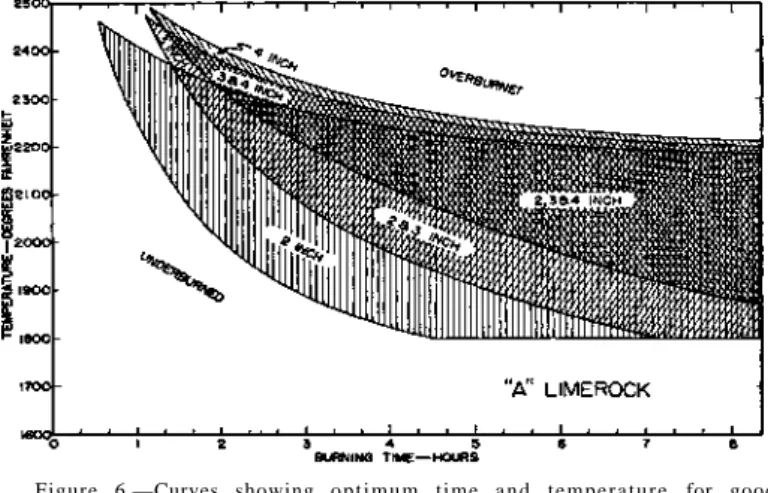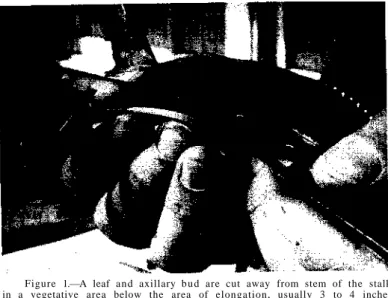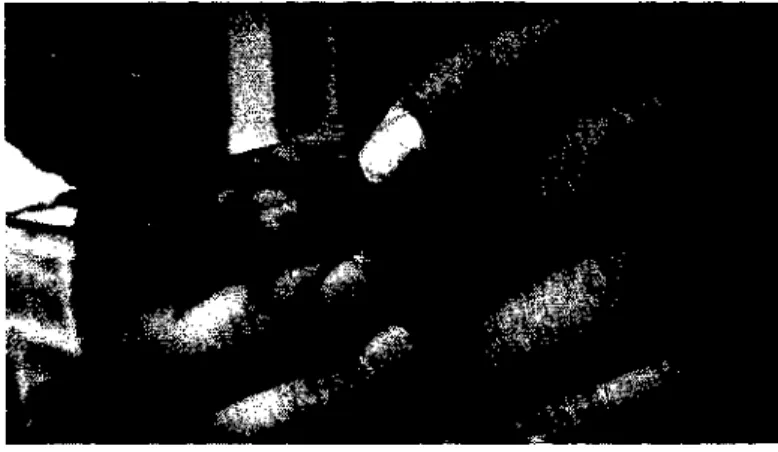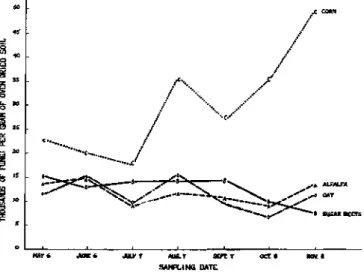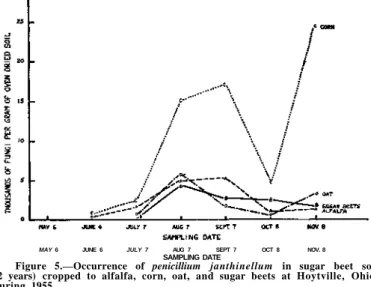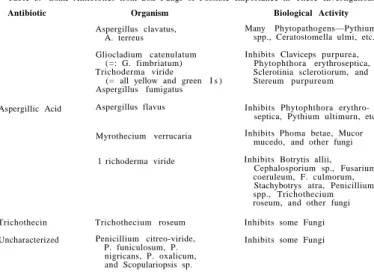Elected President of the American Association of Sugar Beet Technologists for the two years 1956-1957 was Austin A. The actual value of the increased yield per acre during the last twenty years in the first twenty years combined — nearly $500 million more for farmers.
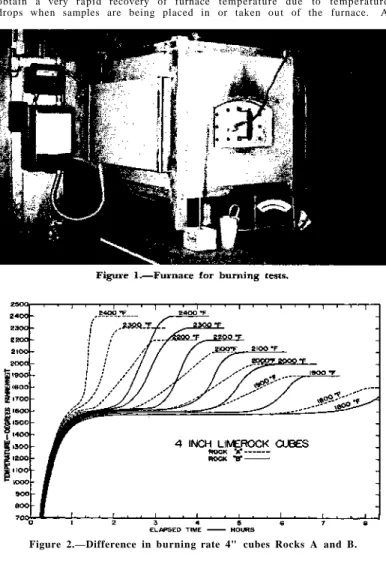
Interspecific Hybrids in the Genus Beta
If some of the desired germplasm is passed on to offspring, it may be possible to recover it in plants compatible with sugar beets. The offspring resulting from pollination of the semi-fertile hybrid with sugar beets are quite economical, and there is hope that the desirable traits of the Patellares species can be transferred to sugar beets.
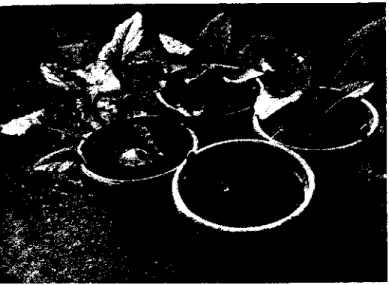
The control element for the sampler is located at the back of the pile where the pilot operator stands. After the sample has been bagged, he places it in a pile at the side of the dump and has time to prepare for the next truck.
The question remains unanswered whether treatment with aminotriazole can be carried out in such a way as to reduce the respiration rate as measured in whole beets. Because respiration rate as measured in whole beets is of paramount importance, current evidence speaks against the practical benefits of aminotriazole treatment.

This was due to the ease with which a seed stalk of the desired size could be obtained. The indications were that the nature of sugar beet nematode resistance is a characteristic of the root itself and not something produced in the leaves and later transferred to the root.
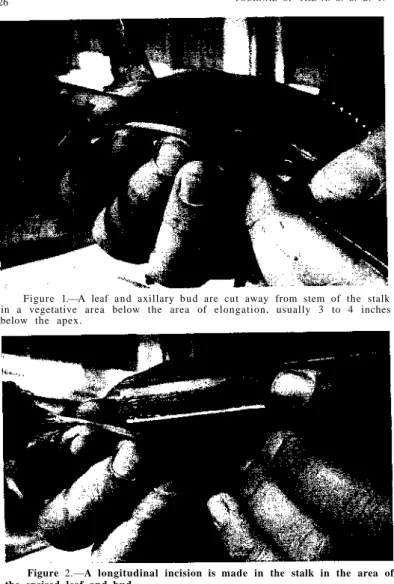
Black Root of Sugar Beets as Influenced by Various Cropping Sequences and Their Associated Mycofloras
Black root of sugar beet under the influence of different cultivation sequences and associated mycoflora. Striking effects on black root incidence were the result of crops of soil thoroughly infested with black root pathogens for alfalfa, corn, oats, and sugar beet (see Figure 1).
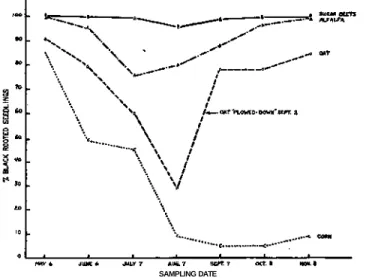
Metering Devices and Test Results of Some Foreign and Domestic Sugar Beet Planters 1
Row spacing is controlled by the speed of the belts relative to the ground. No points were made for the Ventura p l a n t e r as the seed b u n c h i n g was such a p a r e n t that it was not considered valid.
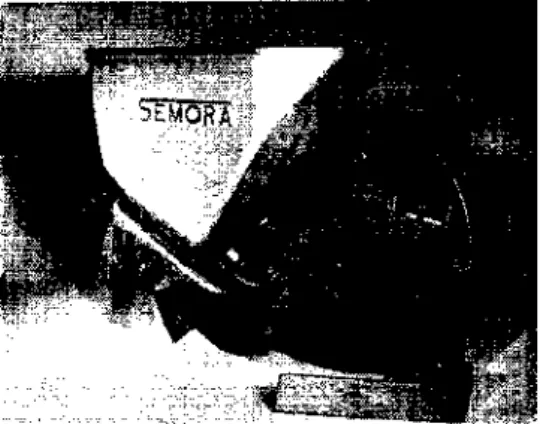
Note that although the parts per million are approximately three times greater when determined by the Na H C O3 method than when determined by the CO. method, there is nevertheless a close correlation between the two. Available phosphate levels in terms of p pm of P 04 are about three times higher in most soils when analyzed by the NaHCO. method than when analyzed by the C 02 method.
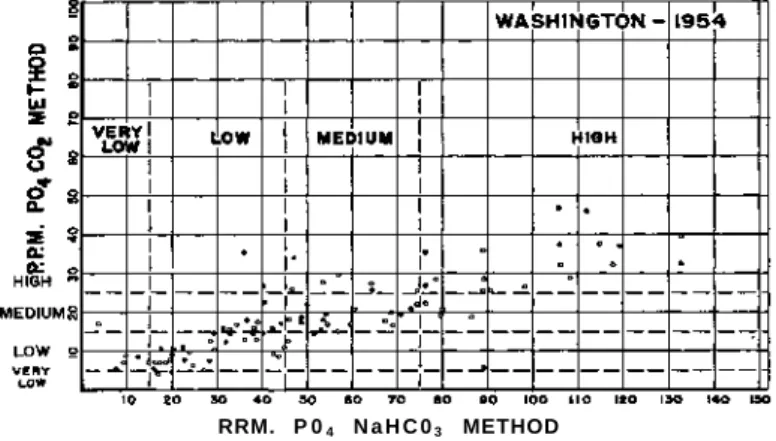
Beet Mosaic and Beet Yellows Virus Transmission by the Green Peach Aphid
The threshold period of inoculation of beet mosaic virus by the green peach aphid, like that of the acquisition threshold period, is a matter of seconds. The same type of curve (Figure 4) is applicable to the data on the threshold period of beet yellows virus inoculation, but, as in the case of the acquisition period, the time scale is in hours.
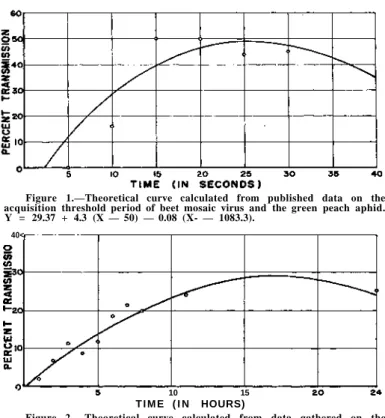
The Design of a Vacuum Pan
GPM x IOOO Figure 6.—Impeller characteristics
Shown in dashed lines below the 0° Brix curve for the original pan is a plot of the 0° Brix head loss curve for the three pans that were designed after this first pan. Initial operation at 84 rpm indicated that there was a significant power increase during the tightening of the strike; this indicated that cavitation was occurring at the impeller blades. The spread in trystalsizing appears to come during the first half of the boil of the strike.
Galactinol-Weight Relationships in Breeding for Resistance to the Sugar Beet Nematode
All these seed plots, including 13 susceptible control plots, Hybrid X X I I I, were sown randomly in the nematode nursery in 1955. However, growing conditions were not as favorable in 1955 as in 1954 because of drought, especially in the last part of the season. The degree of tolerance of some of the selections expressed under extremely severe nematode infestations is shown.
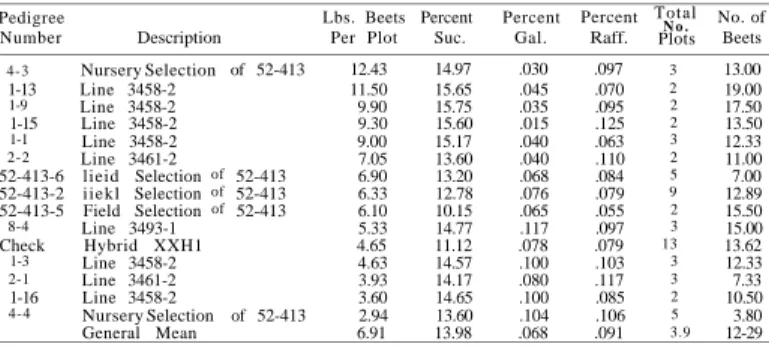
Sampling of Sugar Beets for the Processing Laboratory
It was found that the concentration of sugar in the beet center decreases with time to give a very good verification of the trend previously reported (4). The very large differences in the different parts of the beet make it very difficult to take uniform samples from one beet. Conductive tissues of fresh beet roots have a much higher concentration of sugar than parenchyma tissues.
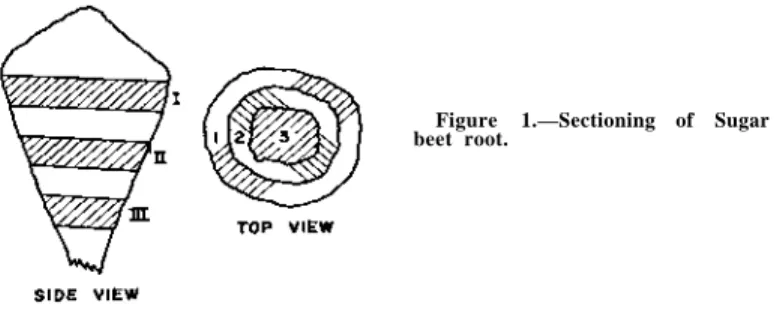
The New DdS Silver Slope Diffuser
The first operation of the lead spreader established that the volumetric capacity was increased in the Silver design, but the sugar recovery was disappointing. After a few days of operation, the distributor was shut down and changes were made in the construction of the breaker bars. T he overall length of the machine was 57 feet, and the overall width was 12 feet.
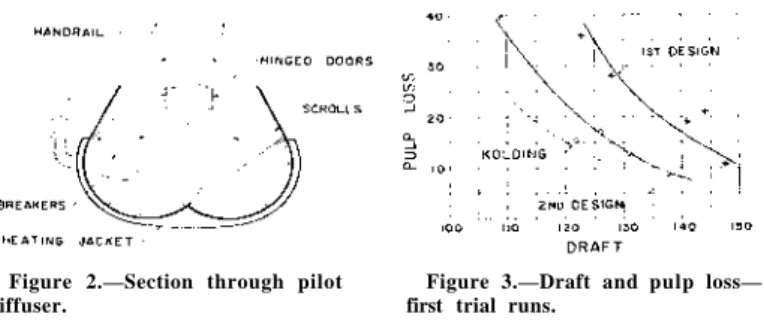
J. Arnold 1890-1954
He had been a member of the American Society of Sugar Beet Technoologists since 1939 and served on its advisory board in 1948 and 1949. He was a member of the American Society of Sugar Beet Technoologists from 1950 until his death. He had been a member of the American Society of Sugar Beet Technologists and received the Forty-Year Veteran Award in 1946.
T h e Influence of Antecedent Climates Upon the Subsequent Growth and Development of
The greatest effect of initial climate on high weight can be seen in plants that were transferred from a hot to a cold climate. The greatest effect of final climate can be seen for cold climate p l a n t shifted to a h o t climate. B o t h tissues of the blade a n d petiole of p l a n t s in cold climates were a d a r k green.

From a cursory examination of the data in Tables 1 and 2 it is not possible to determine which of the nitrogen components is most closely associated with or responsible for changes in sugar beet quality. If one were to decide, based on the data in Table 3, which of the nitrogen components in the sugar beet root are most closely related to variations in quality, it would appear that g l u t a m i n e and d a m m o n i a nitrogen would be chosen. Numerous observations have shown that the problem of nitrogen fertilization is a problem in the sugar beet growing areas of the United States.
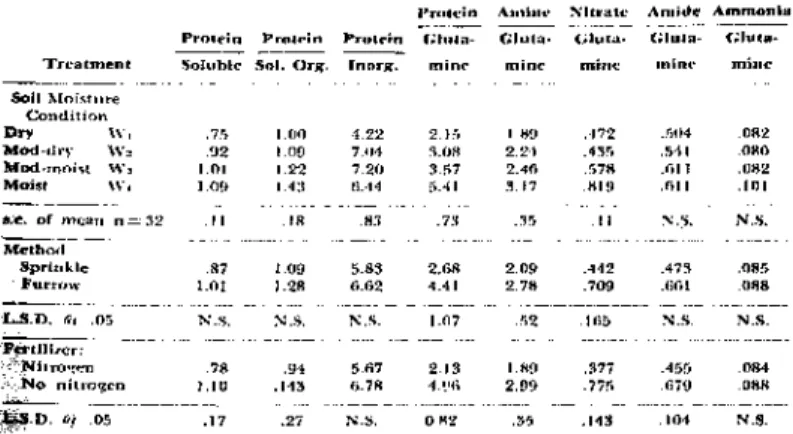
Virtually all the removal of foreign m a t e r by the gripper rolls takes place t o p e n i n g above the cage roll. T h e first pile of this design is in the factory yard of the Holly Sugar C o r p o r a t i o n at Tracy, California. This grab roller screen has shown that with tough clods it will break them up and sift them out.

Beet Leafhopper 1
In one test, the seed was soaked for 30 minutes in 1% emulsions of the same materials used in the soil-soak tests. Some plants from treated seed showed growth abnormalities. Therefore, a series of tests were conducted to determine the plant tolerance of these materials. These data indicate that after the bileaf stage the effectiveness of the treatment decreases rapidly.

Isolation and Properties of Sugar Beet Araban
For these results it would seem desirable to control the alkalinity of the battery water supply in the pu l p a n d compressibility to minimize the extraction of a r a b a n . We used fractionation of acetylated arabane followed by dc acetylation to give a purified arabane. Although even the best arabane from these fractions still shows evidence of the presence of galactose and possibly a trace of rhamnose, it is probably suitable for use in studying the effect of arabane on the processing characteristics of sugar beet juices.

Inheritance of Raffinose Production in the Sugar Beet
The d e t e r m i n a t i o n of raffinose is given as a p e r c e n t on the dry substance in the beet juice a n d assumes a constant marc. The sugar beet lines used as p a r e n t a l m a t e r i a l for this study were a p a r e n t l y homozygous for the factors each carries for raffinose production in beet. From a quantitative point of view, the factors for the p r o d u c t i o n of raffinose in both parents followed by a degree of r i t h m e t i c a n are therefore additive.

Effects of Sugar Beet Root Diffusates and Extracts, and Other Substances, on the Hatching of Eggs
T h e i m p o r t a n t p o i n t revealed by this experiment is the fact that even in the presence of young sugar beet roots only about one third of the larvae emerged from the cysts. Th i was determined by counting the larvae remaining in 50 cysts from each of the three lots after the end of the experiment. Factors affecting larval emergence from cysts of the beet cutworm, Heterodera schachtii Schmidt.
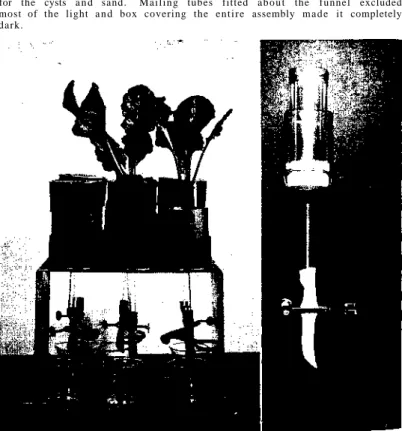
The time required for the floc to become detectable is a function not only of the saponin concentration in the sugar, but also of the source of the sugar. We do know that the degree of purification of the saponin has an influence on the color development. Green spots on the sides or fried surface of the dry funnels indicate that all the sugar has not been washed.
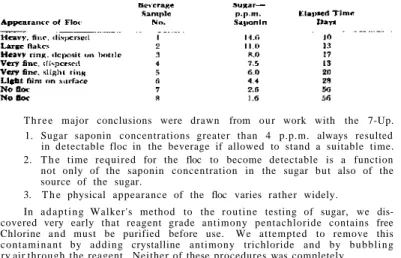
Materials and Methods Used in Producing Commercial Male-Sterile Hybrids
Using these respective lines to keep the male sterile seed in. Fi generation ensures a strong male sterile for both parent seed and commercial seed plots. Commercial cultivars as top-cross parents and F, pollinators produced by using SLC 824 aa Mendelian Male sterile.
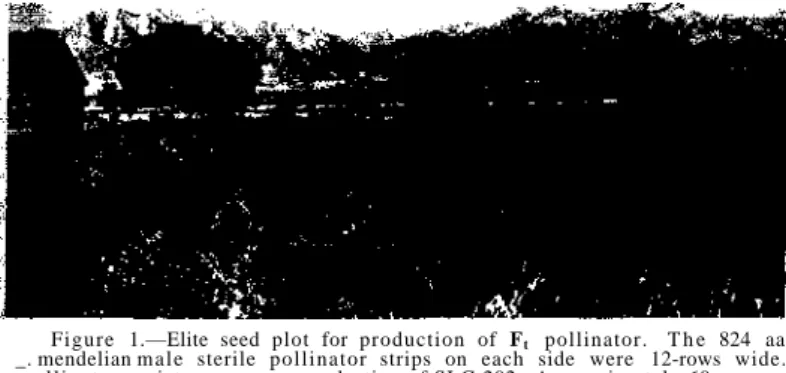
Drying Temperatures and Storage Problems of Sugar Beet Seeds
At a given air flow for sugar beet seeds, the static pressure is slightly less than for soybean and shell corn seeds. A three-inch diameter speedometer was placed on top of the air velocity c h a m b e r to d e t e r m i n e . The t a n g e n t of the angle at which the seeds will just slide is the coefficient of friction.
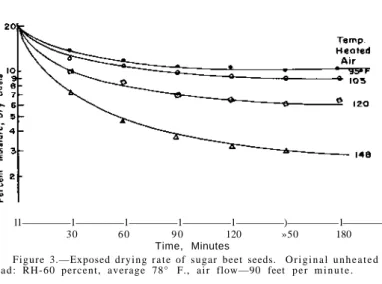
Experience with Auto-Jet Filters
Fortunately, a 1-hour recirculation of hot caustite through the filter removed the scale and restored the screen's idle filtration zone. Poiseuille's basic liberation equation, however, warns us of the detrimental effects of viscosity on flow rates. At the relatively high flow rates used (7.8 g ph h / sq. ft.), the lirix of the syrups averaged 71.5 (corrected) for both campaigns.
The means of the selected roots in Table 2 confirmed these correlations, as the low raffinose selection (54-411) had a lower sodium content and a higher sucrose percentage than 54-410; weight was about the same. This would indicate that the selected roots of these two groups were part of the same population for all traits shown in Table 2. The results of the offspring from these two groups are shown in Table 3. The sodium content of these two groups of groups were approximately the same.

The results of testing sugar beet varieties for resistance to Aphanomyces root rot have not been disappointing to date. Better results were obtained when testing beetroot varieties for their resistance to Rhizoctonia and Fusarium root rot than to Aphanomyces. T h e difficulty involved in finding resistance to Aphanomyces root rot is probably due to the n a t u r e of the fungus.
Sugar Beets 1
Results of sugar content determinations at harvest for some of the 1953 locations are presented in T a b l e 1. No measurable effect of irrigation t r e a t m e n t was noted, and generally only the highest nitrogen rate resulted in an appreciable reduction in sucrose percentage. The frequencies used were determined from the soil moisture re t e n t i o n characteristics of the profiles and peak consumption information previously determined.

Also, a significant portion of the nitrogen applied was probably still in the ammonia form when the first water applications took place. Higher sugar levels resulted from excess water applications, especially at the high nitrogen levels, indicating reduced plant nitrogen levels in the over-irrigated treatments. Nitrate-nitrogen content in sugar beet petioles was greatly reduced by early applications of excess water and, to a lesser extent, by similar applications late in the season.

Studies on the Control of Saponin Concentration in Refined Beet Sugar
Because the saponins are only one of m a n non-sucrose constituents in purified beet juice and because very efficient sugar end operation almost always results in an improved sugar quality, it is logical to assume that it is a lower saponin concentration in g than result of a lower saponin concentration in g. n purities , precision sugar b o i l i n g t e c h n i q u e to avoid crystal agglomerates and as n e a r perfect separation of m o t h e r l i q u o r from crystals as possible. Once results of the work at factory C were available, identical conditions were established at factory. Despite these efforts, results submitted to Factory C may not be recorded in Factory A, even for short periods of time.

Ineffective control, even when good crop rotation is applied, may possibly be caused by the persistence of the weeds, Kochia scoparia and Chenopodium album in the cultivated fields, which act as hosts. The first visible disease symptoms are necrosis of cell walls and increased cell division in the area surrounding the nematode. Observe the extensive area that stains differently due to the presence of the nematode (which is not apparent in this photo) and is limited to the star-shaped area of the note; note hypertrophic cells.
